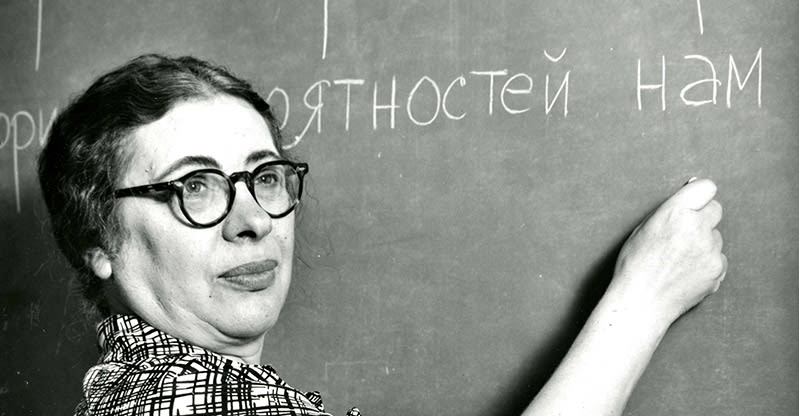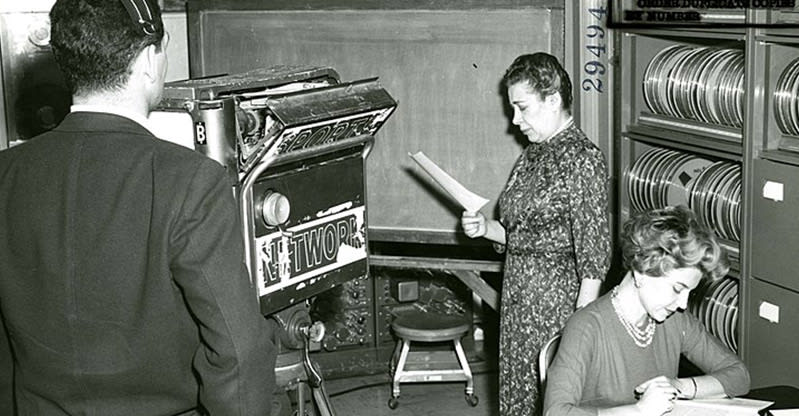We’ve already told you about some incredible women who revolutionized technological fields. A few of these extraordinary women include NASA scientist, Katherine Johnson, computer scientist and U.S. Navy Rear Admiral, Grace Hopper, and Girls Who Code founder, Reshma Saujani. These are only some of the women we’ve chosen to highlight, but it does not stop there. Today, we are putting the spotlight on none other than the outstanding Ida Rhodes.

Background History
Originally born Hadassah Itzkowitz in a Ukrainian town around 150 miles outside Kiev, her family emigrated to the United States when she was only 13 years old. She earned her undergraduate degree in mathematics at Cornell University in 1923, earned her master’s degree a few months later, and later went on to study at Columbia University for one year. Impressive, isn’t it?
What did she do?
Among many other spectacular achievements, she was the supervisor and planner overlooking the creation of the Handbook of Mathematical Functions, Number 55 for the Mathematical Tables Project. The Mathematical Tables Project was a program under the New Deal which aimed to lower the unemployment rate of mathematicians, by having them make math tables.
Believe it or not, in 1947, she was sent to the National Bureau of Standards, or NBS, in Washington D.C. to learn as much as she could about its development of electronic computers. She was upset with how little she knew about the process and when she went to confront her boss he told her that the NBS was thoroughly impressed by her, so she went back to continue learning.

Rhodes later became a very active consultant in the Machine Development Laboratory of the National Applied Mathematics Laboratories.
She was a trailblazer in the world of programming with her great ability of analysis. Along with another talented woman named Betty Holberton, she designed the C-10 programming language for Census Bureau UNIVAC I in the early 1950s. You might ask, what was the UNIVAC I? It was the first-ever commercial computer manufactured in the United States.
Have you ever heard of the Social Security Administration? The computers used at the SSA were created and programmed by Rhodes.
She was a lecturer. Rhodes went to private businesses and government agencies and explained how computers could allow them to work much more efficiently. On top of this, she also taught coding and programming techniques for those who were physically handicapped.

Awards and Fun Facts
Her professors would arrange their class schedules so that she would be able to attend class because she was so busy working at the local hospital.
Rhodes met Albert Einstein in 1922 but barely spoke a word because she was in awe of him and his work. In 1936, she attended his speaker series at Princeton University, and upon seeing her said, “It must have been in 1922 that we first met at Cornell. Have you learned to talk since then?”
The Department of Commerce presented her with two different awards. The first was an Exceptional Service Gold Medal in 1949 for “significant pioneering leadership and outstanding contributions to the scientific progress of the nation in the functional design and application of electronic digital computing equipment.” The second was a Certificate of Appreciation on the 25th anniversary of the UNIVAC I, for her contribution to the “Information Revolution.”
Since Rhodes had a great deal of impact on the making of the UNIVAC I, she was recognized as a UNIVAC I pioneer at the National Computer Conference in 1981.
Ida Rhodes’ influence on the coding and technological world is still seen today and for that we thank her.

Incorporate Coding into Your Child’s Life!
Sadly, your kids cannot time travel and learn from the Ida Rhodes, but your children can still take the principles she established and further her legacy. Coding will not only have an immense impact on their lives, but it will allow them to achieve things they’ve only seen in their dreams. With the ability to create their own app, edit and upload their very own YouTube videos, and learn how to program virtual robots, they can make those dreams a reality.
Take a look at our live, online classes and allow your kids to reach for the stars.




